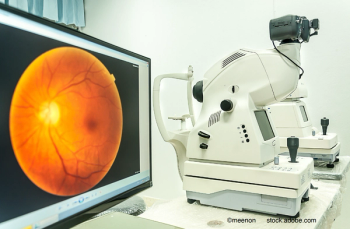
ASRS 2024: HK1 associated retinitis pigmentosa
Patrick C. Staropoli, MD, talked about his presentation on the clinical characterization of Hexokinase 1 (HK1) mutations causing autosomal dominant pericentral retinitis pigmentosa at the annual ASRS meeting in Stockholm, Sweden.
Patrick C. Staropoli, MD, talked about his presentation on the clinical characterization of Hexokinase 1 (HK1) mutations causing autosomal dominant pericentral retinitis pigmentosa at the annual ASRS meeting in Stockholm, Sweden.
Video Transcript:
Editor's note: The below transcript has been lightly edited for clarity.
Patrick C. Staropoli, MD:
Hi, my name is Patrick Staropoli, an associate physician at Retina Consultants of Texas. I am really excited to be out here in Sweden for ASRS. I just finished my presentation a little while ago. Today, I got to speak about HK1 associated retinitis pigmentosa. It's an autosomal dominant type of retinitis pigmentosa.
What we wanted to do is to sort of characterize all of the clinical features of this disease, because even though it's been researched and described extensively, the papers that are out there in literature really don't have a clear pattern or consensus on what this looks like clinically. So, what we found in our series of patients in our practice is about 30 patients, 60 eyes, 22 unrelated families. And there's a very distinct pattern that you can see on the autofluorescence, where basically it's just the posterior pole, for the most part that is affected. There's a hyperautofluorescent ring that goes around the macula and the arcades. And there's also more of involvement on the nasal side of the periphery rather than the temporal side. So, it's a really distinct pattern. If you pick it up in clinic, your light bulb immediately should go off ... this could be HK1 associated retinitis pigmentosa. It's usually inherited in autosomal, dominant fashion. So it does have implications for families.
That was pretty much what we tried to put together today, and make people more aware of it. And 1 of the other things that's really interesting about this disease process is that the mutation that is most frequent in HK1 actually doesn't affect the functional domain of the protein. So, HK1 is the first step in glycolysis. And even though the protein still functions normally, the question still comes up, well, how is this causing damage to the retina? And as of this point in time, no one really knows for sure. HK1 is known to interact with other proteins that affect apoptosis. And so it's possible that 1 of these peripheral changes is affecting its ability to interact with these other proteins and that leads to unregulated apoptosis, but more research will help us figure that out.
Newsletter
Keep your retina practice on the forefront—subscribe for expert analysis and emerging trends in retinal disease management.
















































